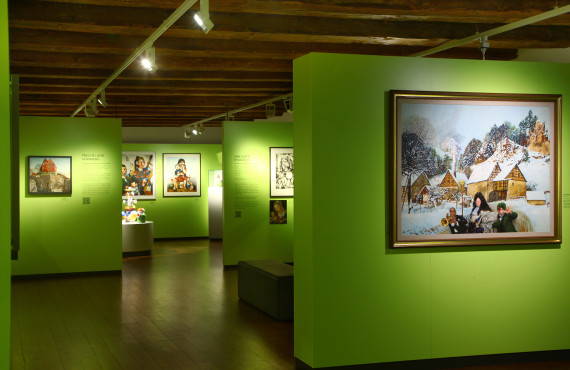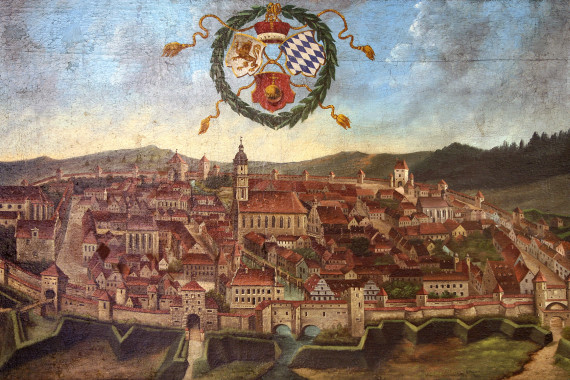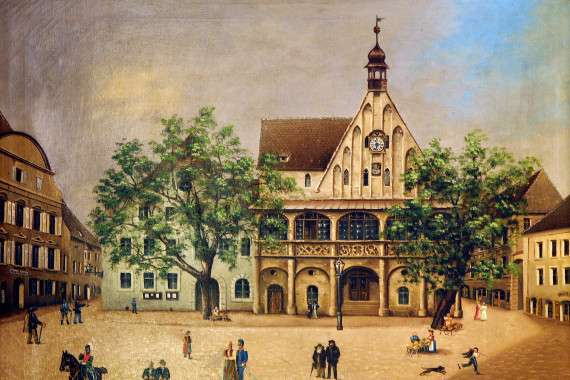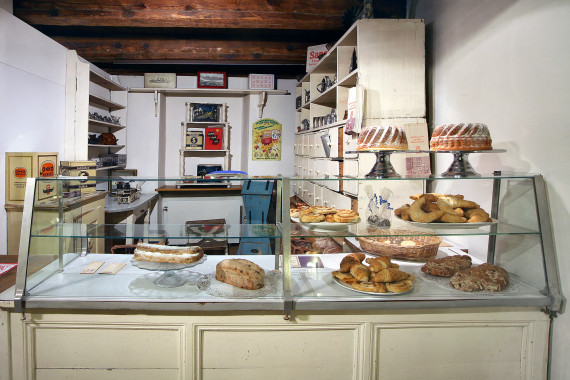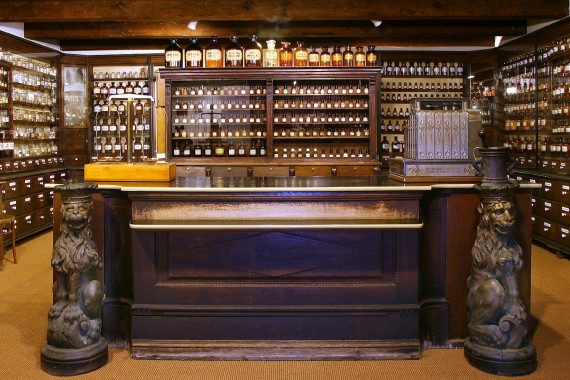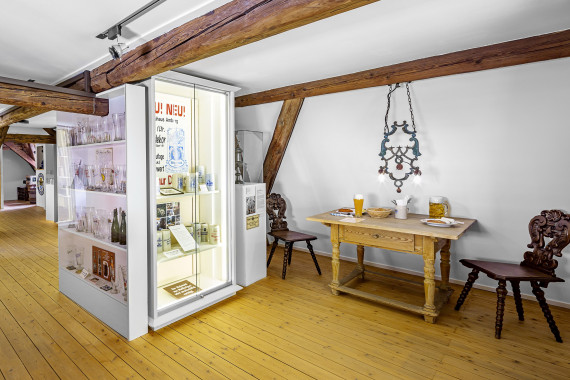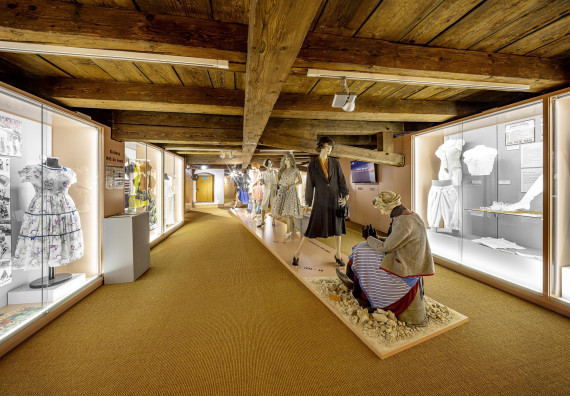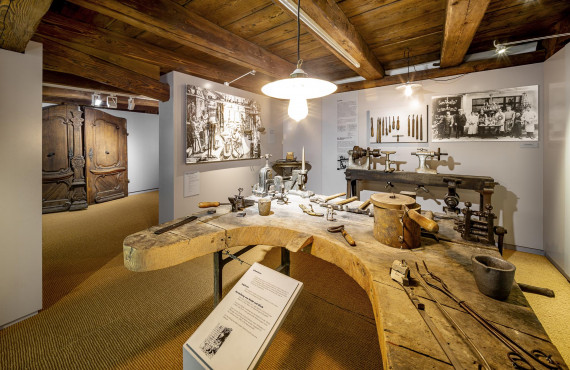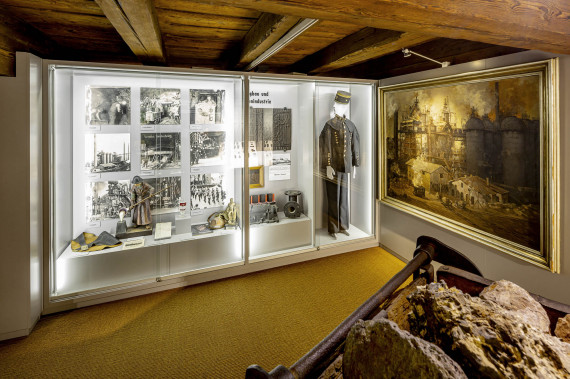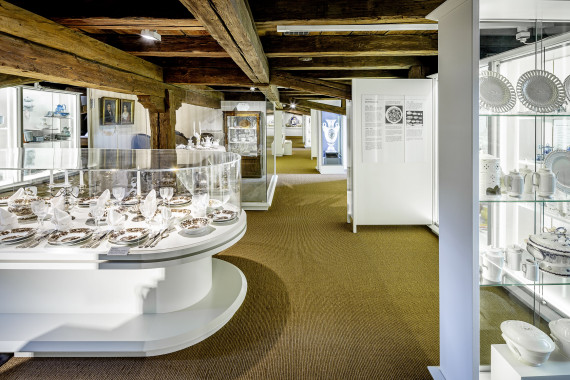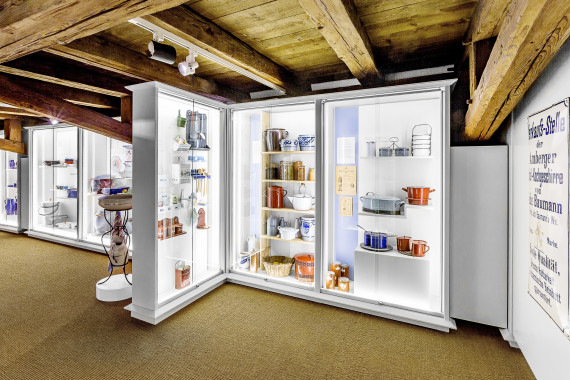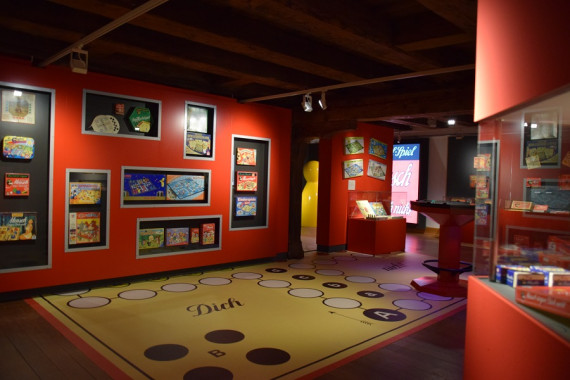Impressum
Kontakt zum Stadtmuseum Amberg
Telefon: +49 9621-101284
E-Mail: stadt(at)amberg.de
Rathaus-Anschrift: Marktplatz 11, 92224 Amberg
Post-Anschrift: Postfach 2155, 92211 Amberg
Öffnungszeiten des Stadtmuseums
Dienstag bis Freitag von 11 bis 16 Uhr
Samstag und Sonntag von 11 bis 17 Uhr
Montags geschlossen
Herausgeber und inhaltlich verantwortlich gemäß § 4 TMG und § 55 RStV
Stadt Amberg
Kulturreferat
Dr. Fabian Kern
Kulturreferent
Zeughausstraße 1a
92224 Amberg
Telefon: +49 9621-101232
Fax: +49 9621-101281
Die Stadt Amberg ist eine Gebietskörperschaft Öffentlichen Rechts.
Sie wird vertreten durch Oberbürgermeister Michael Cerny.
Redaktion
Julia Riß, Dagmar Lehner
Stadtmuseum Amberg
Zeughausstraße 18
92224 Amberg
Telefon: +49 9621-101284
Mail: stadtmuseum(at)amberg.de
Support
Fotos und Bildmaterial
Das Bildmaterial auf der Homepage der Stadt Amberg wurde zur Verfügung gestellt:
Stadt Amberg: Stadtmuseum
Fotograf Erich Spahn
Fotograf Wolfgang Steinbacher
Fotograf Georg Birner
Urheberrechte
Alle Rechte, auch die der fotomechanischen Wiedergabe, der Vervielfältigung und der Verbreitung mittels besonderer Verfahren (zum Beispiel Datenverarbeitung, Datenträger, Datennetze), auch teilweise, behält sich die Stadt Amberg vor. Für etwaige Satzfehler sowie für die Richtigkeit der Eintragungen übernimmt die Stadt Amberg keine Gewähr.
Haftungsausschluss
Die Inhalte dieser Website werden mit größtmöglicher Sorgfalt erarbeitet und geprüft. Fehler im Bearbeitungsvorgang sind dennoch nicht auszuschließen. Hinweise und Korrekturen senden Sie bitte an eine der hier aufgeführten Adressen der Stadt Amberg. Eine Haftung für die Richtigkeit, Vollständigkeit und Aktualität dieser Webseiten kann trotz sorgfältiger Prüfung nicht übernommen werden. Die Stadt Amberg übernimmt insbesondere keinerlei Haftung, für eventuelle Schäden oder Konsequenzen, die durch die direkte oder indirekte Nutzung der angebotenen Inhalte entstehen.
Die Stadt Amberg ist als Inhaltsanbieter für die eigenen Inhalte, die es zur Nutzung bereithält, nach den allgemeinen Gesetzen verantwortlich. Von diesen eigenen Inhalten sind Querverweise ("externe Links") auf die von anderen Anbietern bereitgehaltenen Inhalte zu unterscheiden. Diese fremden Inhalte stammen weder von der Stadt Amberg, noch hat die Stadt Amberg die Möglichkeit, den Inhalt von Seiten Dritter zu beeinflussen. Die Inhalte fremder Seiten, auf die die Stadt Amberg mittels Links hinweist, spiegeln nicht die Meinung der Stadt Amberg wieder, sondern dienen lediglich der Information und der Darstellung von Zusammenhängen. Die Stadt Amberg haftet nicht für fremde Inhalte, auf die es lediglich im oben genannten Sinne hinweist. Die Verantwortlichkeit liegt alleine bei dem Anbieter der Inhalte.
Mit Urteil vom 12. Mai 1998 hat das Landgericht Hamburg entschieden, dass mit Anbringung eines Links die Inhalte der gelinkten Seite ggf. mit zu verantworten sind. Dies kann - so das Landgericht - nur dadurch verhindert werden, dass man sich von diesen Inhalten ausdrücklich distanziert.
Die Aufnahme von Links auf andere URLs ist ein Service für unsere Internet-Besucher und jederzeit widerrufbar. Sie beinhaltet keinen Rechtsanspruch auf Beibehalt.
Elektronische Kommunikation
Zugangseröffnung nach Art. 3a Bayerisches Verwaltungsverfahrensgesetz (BayVwVfG)
Die Stadtverwaltung bietet E-Mail und Online-Formulare bei den jeweiligen Angeboten im Internet. Damit wir Ihre Nachrichten und Dokumente, die Sie der Stadtverwaltung per E-Mail übermitteln, auch bearbeiten können, müssen diese folgende Voraussetzungen erfüllen:
1. E-Mails müssen dem Internetstandard (SMTP; MIME) entsprechen und in Westeuropa gängige Zeichensätze verwenden.
2. Dateianhänge (sog. Attachments) werden in folgenden Formaten und Versionen akzeptiert:
*.DOC (MS Word bis Version 97/2000/XP)
*.XLS (MS Excel bis Version 97/2000/XP)
*.RTF (Rich Text Format)
*.PDF (Portable Document Format bis Version 1.3)
*.TXT (DOS ASCII-Text, Windows ASCII-Text)
*.JPG, *.TIF, *.BMP, *.GIF, *.PGM, *.PBM, *.PNG (Standard Bildformate)
Weitere Formate oder Versionen dürfen nur mit ausdrücklicher Zustimmung der Empfangsstelle verwendet werden. In allen Formaten dürfen keine automatisierten Abläufe oder Programmierungen (Makros) enthalten sein.
3. Dateien in den oben genannten Formaten können durch Komprimierungsprogramme im Dateiumfang verringert (gepackt) werden. Komprimierte Dateien nimmt die Stadt Amberg nur als nicht selbstentpackende ZIP-Archive (*.zip) entgegen.
4. E-Mails sollten (incl. Attachments) technisch bedingt nicht mehr als 5 Megabyte Umfang haben.
5. Aufgrund immer stärkerer Virenverbreitung per E-Mail werden von der Stadtverwaltung geeignete Gegenmaßnahmen ergriffen. E-Mails die in HTML-Form versendet werden und Scripte enthalten, werden abgewiesen, da damit verschiedene Aktionen unbemerkt ausgeführt werden können.
6. Einige Dateierweiterungen sind gesperrt, da es sich um Programme handelt, die ungewollt zur Ausführung kommen können: Die Liste der gesperrten Dateierweiterungen können Sie unter folgendem Link ansehen: www.lhm-service.de/mail/liste.html. Anlassbezogen (z. B. aktueller Virenangriff) können auch weitere Dateien gesperrt werden.
7. Werden E-Mails, die Scripte und/oder eine der genannten Dateien als Anhang enthalten an die Stadtverwaltung geschickt, so wird die Nachricht abgewiesen und mit einer entsprechenden Fehlermeldung an den Empfänger zurückgeschickt.
8. Zur Vermeidung von Spam-Mails verwendet die Stadtverwaltung eine Software zur Identifizierung von unerwünschten E-Mails. Durch diesen Prüfmechanismus können Ihre E-Mails abgewiesen werden, weil diese durch bestimmte Merkmale fälschlich als Spam identifiziert wurden. Damit Sie den Mailserver der Stadtverwaltung dennoch kurzfristig erreichen, wenden Sie sich an die EDV-Abteilung der Stadt Amberg.
9. Haben Sie die Kommunikation auf elektronischem Weg eröffnet, geht die Stadtverwaltung davon aus, dass die weitere Kommunikation in der betreffenden Angelegenheit auf diesem Wege abgewickelt werden kann, soweit andere Vorschriften dem nicht entgegenstehen.
10. Sofern eine förmliche Zustellung mit Zustellnachweis erforderlich ist, ist dies auf elektronischem Weg derzeit nicht möglich.
11. Wir weisen Sie darauf hin, dass die Datenübertragung über das Internet ungesichert erfolgt und die übertragenen Daten somit von Unbefugten zur Kenntnis genommen und auch verfälscht werden können. Verwenden Sie deshalb für vertrauliche Informationen an die Stadtverwaltung keine E-Mails.
Des Weiteren bitten wir um Beachtung der Datenschutzhinweise der Stadt Amberg.
Im Übrigen verweisen wir auf die Regelungen des Art. 3a Bayerisches Verwaltungsverfahrensgesetz (BayVwVfG):
"Elektronische Kommunikation
(1) Die Übermittlung elektronischer Dokumente ist zulässig, soweit der Empfänger hierfür einen Zugang eröffnet.
(2) . . .
(3) Ist ein der Behörde übermitteltes elektronisches Dokument für sie zur Bearbeitung nicht geeignet, teilt sie dies dem Absender unter Angabe der für sie geltenden technischen Rahmenbedingungen unverzüglich mit. Macht ein Empfänger geltend, er könne das von der Behörde übermittelte elektronische Dokument nicht bearbeiten, hat sie es ihm erneut in einem geeigneten elektronischen Format oder als Schriftstück zu übermitteln."
Elektronischer Rechtsverkehr (Besonderheiten bei förmlichen Rechtsbehelfen)
Nach dem BayEGovG hat seit dem 1. Juli 2016 jeder Bürger das Recht, elektronisch mit bayerischen Behörden zu kommunizieren (Art. 2 Satz 1 BayEGovG). Dementsprechend ist grundsätzlich jede Behörde verpflichtet, einen Zugang für die Übermittlung von Dokumenten in elektronischer Form bzw. für schriftformersetzende Kommunikation zu eröffnen (Art. 3 Abs. 1 Satz 1 BayEGovG).
Für die schriftformersetzende Kommunikation (z.B. die Einlegung von Widersprüchen) gilt, dass übermittelte Dokumente mit einer qualifizierten elektronischen Signatur nach der eIDAS-VO (Verordnung (EU) Nr. 910/2014 des Europäischen Parlaments und des Rates vom 23. Juli 2014) versehen sein müssen, um dieselbe rechtliche Verbindlichkeit wie ein unterschriebenes Papierdokument zu erlangen.
Dafür muss eine Signatureinrichtung für qualifizierte elektronische Signaturen (Signaturkarte und Kartenleser) verwendet werden. Die Signaturkarte (Smartcard) wird von verschiedenen Zertifizierungsdienstanbietern (ZDA, auch Trustcenter genannt) herausgegeben. Informationen über die elektronische Signatur finden Sie bei der Bundesnetzagentur.
Derzeit besteht für Sie, wenn Sie der Stadt Amberg im Wege der elektronischen Übermittlung schriftformersetzende Dokumente zuleiten wollen, nur die Möglichkeit der Übermittlung mit einer qualifizierten elektronischen Signatur. Die Adresse hierfür lautet:
stadt(at)amberg.de
Rechtliche Rahmenbedingungen für die Klageerhebung
Die Erhebung von Klagen und anderen Rechtsbehelfen gegen Verwaltungsakte auf elektronischem Weg ist bei dem Bayerischen Verwaltungsgerichtshof und allen bayerischen Verwaltungsgerichten möglich.
Die näheren Modalitäten für die elektronische Einlegung von Klagen und Rechtsbehelfen ergeben sich aus den aktuellen Angaben auf der Internetpräsenz der Verwaltungsgerichtsbarkeit (www.vgh.bayern.de).“
